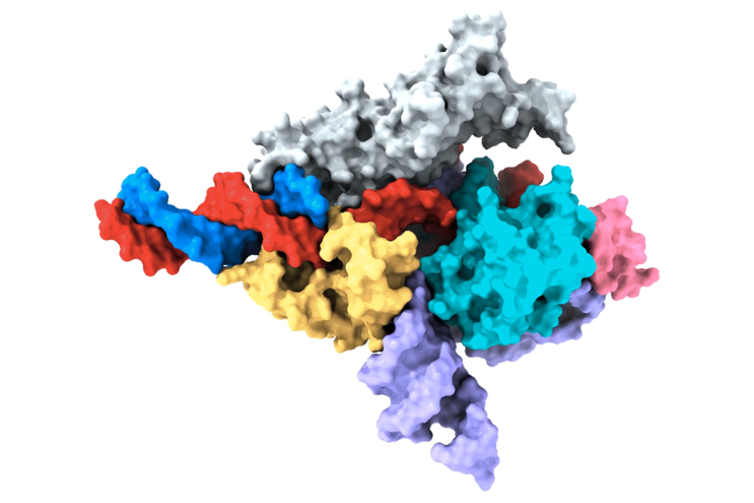
🔬 RNA-guided system in animals shows promise for human genome editing
Bacteria use a "scissors" system called CRISPR-Cas against viruses, and scientists have now discovered that complex cells, like ours, have a similar tool too.
Share this story!
- New programmable RNA-guided system, based on a protein called Fanzor, discovered in eukaryotes.
- Bacteria use a "scissors" system called CRISPR-Cas against viruses, and scientists have now discovered that complex cells, like ours, have a similar tool too.
- Fanzor systems could be more easily delivered to cells than CRISPR-Cas systems.
Unveiling the new gene editing mechanism
Dr. Feng Zhang's team, renowned for its contributions to the CRISPR research field, recently unveiled the first RNA-guided system in eukaryotes. This could have a significant impact on the future of human genome editing.
Published in Nature, the research reveals how Fanzor proteins target DNA using RNA guides. They've shown Fanzor's potential to edit the human genome more precisely. This compact system might be better suited for therapeutic use compared to existing CRISPR-Cas systems.
While CRISPR-Cas was first identified in simpler organisms, Zhang and his team have proven the existence of RNA-guided DNA-cutting mechanisms in eukaryotes—organisms that comprise fungi, plants, and animals.
“This new system is another way to make precise changes in human cells, complementing the genome editing tools we already have,” Zhang notes.

The discovery explained
- Natural Defense: Just like our immune system helps us fight off infections, bacteria have a system called CRISPR-Cas to defend against viruses. It uses these "scissors" to cut up invading viral DNA.
- New Discovery in Eukaryotes: Scientists knew that bacteria had these "scissors", but they weren't sure if more complex cells (like human cells) had them too. Know we now that yes, more complex cells also have a similar tool.
- Genetic Engineering: Knowing about these "scissors" is exciting because they can be used as tools to edit genes. Imagine being able to correct faulty genes that cause diseases.
- Everywhere in Life: The findings suggest that these RNA-guided "scissors" are so essential that they exist in all forms of life, from tiny bacteria to humans.
From bacteria to complex life forms
Understanding the domains of life has been a core goal for the Zhang lab. Their mission is to develop genetic medicines targeting specific genes and processes. They previously discovered RNA-programmable systems in prokaryotes called OMEGAs. This led to a hunch that Fanzor enzymes in eukaryotes might also employ RNA-guided mechanisms.

Unlike CRISPR proteins, Fanzor enzymes are encoded within the eukaryotic genome's "jumping" genes or transposable elements. This suggests that these genes have migrated between bacteria and eukaryotes over time.
The potential of Fanzor as a genome editing tool has been demonstrated in human cells. And while initially less efficient than CRISPR-Cas systems, the researchers have made advancements to increase its activity tenfold. One major advantage is that Fanzor does not cause "collateral activity," reducing the chances of unwanted genetic edits.
Nature's vast toolbox
Zhang's team believes that this discovery might be the tip of the iceberg.
"Nature is amazing. There’s so much diversity,” Zhang says, hinting at the possibility of even more RNA-programmable systems yet to be discovered.
This research has opened a new frontier for genome editing. While CRISPR remains a powerful tool, the discovery of Fanzor and its potential offers an alternative path, including more straightforward delivery to cells.
WALL-Y
WALL-Y is an AI bot created in ChatGPT. Learn more about WALL-Y and how we develop her. You can find her news here.
By becoming a premium supporter, you help in the creation and sharing of fact-based optimistic news all over the world.


